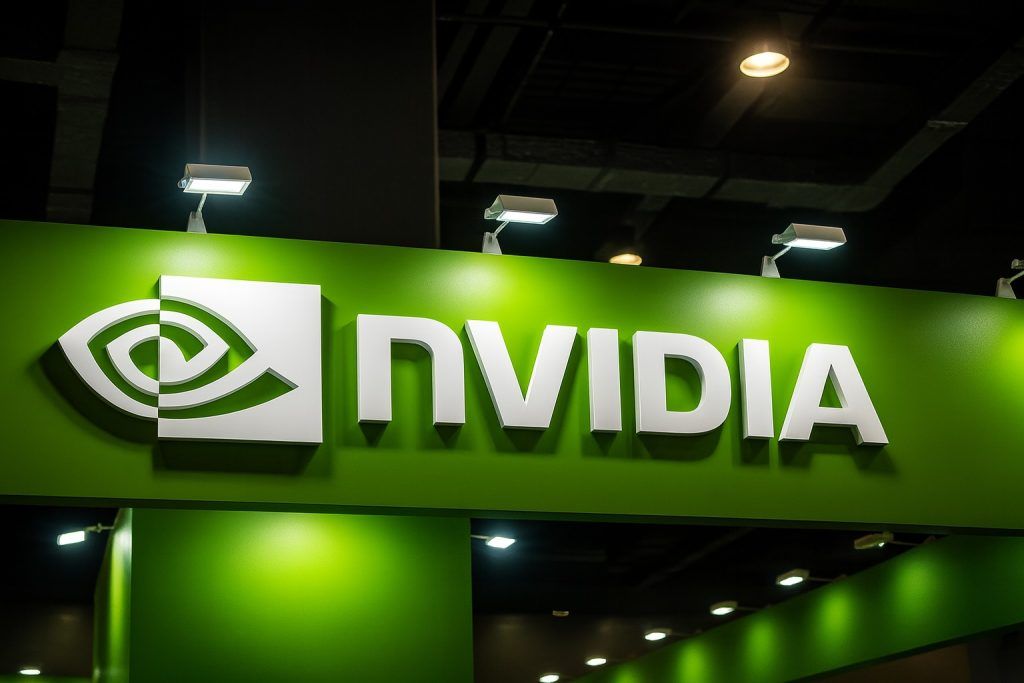U.S. stock futures were higher early Monday, November 17, 2025, pointing to a cautious rebound on Wall Street after last week’s tech-driven volatility. Traders are positioning around three big themes: Nvidia’s make-or-break earnings report, the restart of official U.S. economic data after the government shutdown, and fading odds of a December Federal Reserve rate cut. [1]
Wall Street futures signal a tentative risk-on mood
Before the opening bell, futures tied to all three major U.S. indices were in the green. Contracts on the Dow Jones Industrial Average were up around 0.2%, S&P 500 futures gained roughly 0.6%, and Nasdaq 100 futures climbed close to 1% as of the early premarket session. [2]
The move comes after a whipsaw week that culminated in a mixed close on Friday. The S&P 500 dipped about 0.05%, the Nasdaq Composite eked out a 0.13% gain, and the Dow fell roughly 0.65%, with all three indices rebounding from much steeper intraday losses. For the week, the S&P 500 rose around 0.1%, the Dow added 0.3%, and the Nasdaq slipped 0.5%—a reminder that the broader uptrend remains intact, but nerves around tech valuations and interest rates are rising. [3]
Overseas, the tone is more muted. Europe’s Stoxx 600 index was up only about 0.1%, while Asian markets were under pressure, especially Japan and China, reflecting a mix of geopolitical tension and weak regional data. [4]
Nvidia earnings: The $5 trillion AI giant in the hot seat
The single most important corporate event for U.S. stocks this week is Nvidia’s fiscal Q3 earnings report, due after the closing bell on Wednesday. The chipmaker, now worth more than $5 trillion in market value and up roughly 1,000% since the launch of ChatGPT in late 2022, has become the de facto barometer for the entire artificial intelligence trade. [5]
Wall Street is expecting another blockbuster quarter. Consensus forecasts point to revenue of about $54–55 billion, implying year‑on‑year growth of more than 50%, with earnings per share projected to jump by a similar magnitude. Options markets are pricing in a large post‑earnings move, underscoring just how critical this print is for the S&P 500 and Nasdaq. [6]
Nvidia’s influence is huge:
- It now accounts for roughly 8% of the S&P 500 and nearly 10% of the Nasdaq 100, giving its share price outsized power over index direction. [7]
- Its chips sit at the center of an AI build‑out that also drives demand for cloud, networking, power, and data‑center infrastructure.
- Its meteoric rise has sparked growing chatter about an AI “bubble,” particularly after a series of circular deals, venture‑backed infrastructure plays, and highly valued IPOs clustered around AI themes. [8]
Last week’s trading showed how sensitive markets are to AI sentiment. After a sharp tech selloff, dip buyers returned on Friday, lifting names like Nvidia, Palantir and Microsoft more than 1% and helping the Nasdaq claw back from deep intraday losses. [9]
Why it matters for today:
- If Nvidia beats lofty expectations and offers confident guidance, it could reignite the AI momentum trade and pull major indices higher.
- If it disappoints—even slightly—investors may rotate further into defensive sectors, turning today’s futures bounce into a short‑lived respite.
From data blackout to data deluge after the shutdown
Another major driver for U.S. stocks this week is the long‑delayed restart of official economic data releases, after a record‑long federal government shutdown effectively froze much of Washington’s statistical apparatus. [10]
Key points on the data front:
- September nonfarm payrolls (jobs report) will finally be released on Thursday, weeks after its original publication date. Markets expect a moderate rebound in job growth and an unemployment rate holding near 4.3%. [11]
- Backlogged reports on construction spending, trade, inventories and other activity indicators are starting to appear, gradually filling in the missing pieces on growth. [12]
- Some October data, including inflation details, may never be fully reported because the underlying collection was disrupted, leading economists to warn that policymakers could face “permanent gaps” in the economic record. [13]
For investors, this matters because the Fed’s next move hinges on how officials interpret an incomplete picture of the economy. With the market already anxious about both inflation and a cooling job market, each data release in the coming days will be scrutinized for clues on whether the soft‑landing narrative still holds.
Fed rate‑cut hopes fade as hawks push back
Just a few weeks ago, traders widely assumed the Federal Reserve would deliver another quarter‑point rate cut at its December meeting, following reductions in both September and October that brought the federal funds target range down to 3.75%–4.00%. [14]
That conviction has faded:
- Market‑implied odds of a December cut have dropped below 50%, according to futures pricing referenced by multiple analysts. [15]
- Fed officials such as Kansas City Fed President Jeffrey Schmid and Dallas Fed President Lorie Logan have stressed upside inflation risks and questioned the need for another near‑term cut, reinforcing a more hawkish tone. [16]
On Wednesday, investors will get minutes from the Fed’s October meeting, which should shed more light on the internal debate: how many policymakers favored a “wait and see” stance versus those open to a third straight cut. Those minutes, paired with the revived data flow, could significantly sway rate expectations into year‑end. [17]
For today’s session, Treasury yields are relatively stable—10‑year U.S. yields are hovering a little above 4.1%—helping equities catch their breath after recent swings, but any sharp move in yields during the U.S. day could quickly change the tone. [18]
Earnings spotlight: Big‑box retailers join Nvidia on center stage
While Nvidia grabs the headlines, it’s far from the only company on traders’ calendars this week. Earnings from major U.S. retailers will provide a real‑world check on the health of the consumer and the housing‑related economy:
- Walmart, Target and Home Depot are all slated to report, alongside Lowe’s, TJX and several other large chains. [19]
- These results will offer insight into holiday spending, home‑improvement demand, and whether high prices and elevated borrowing costs are squeezing middle‑income households.
Analysts describe the overall outlook for U.S. equities as “moderately bullish” but stress that sector rotation is ongoing: funds have been edging into defensive areas such as healthcare, consumer staples and parts of energy, even as they keep one eye on AI and mega‑cap tech. [20]
Global backdrop: Asia tension and Japan’s GDP hit risk appetite
Global markets are feeding into today’s Wall Street mood:
- In Japan, the Nikkei slipped around 0.2% as tourism and retail names plunged after China advised its citizens to avoid travel to Japan amid a diplomatic spat. Stocks like Isetan Mitsukoshi, Ryohin Keikaku (Muji’s parent) and Shiseido sank by about 10%. [21]
- Japan’s economy contracted for the first time in six quarters, hurt by U.S. trade tariffs and weaker exports. At the same time, reports of a roughly $110 billion stimulus package pushed long‑dated Japanese bond yields to multi‑decade highs, raising questions about fiscal discipline and yen stability. [22]
- In Europe, equities are essentially flat but positive, mirroring the “pause and wait” attitude seen in U.S. futures ahead of the data deluge and Nvidia’s results. [23]
Trade policy is another swing factor. Recent moves by Washington to dial back tariffs on certain food imports and cut duties on Swiss goods to 15% from 39%, in exchange for a large investment commitment, have marginally improved the tone around global trade—even as broader tariff regimes remain in place. [24]
Bitcoin, gold and oil: Market mood barometers
Beyond stocks and bonds, other asset classes are sending mixed but important signals:
- Bitcoin is trading back above $95,000, up about 2% on the day after suffering its steepest weekly drop since March, losing more than 10% last week. Its recent pattern of moving with high‑growth tech shares has made it an unofficial sentiment gauge for the AI trade. [25]
- Gold is near all‑time highs, up more than 50% year‑to‑date, but slightly softer today as traders weigh safe‑haven demand against shifting Fed expectations. [26]
- Brent crude oil sits just below $64 a barrel, easing after Russian export flows resumed from a terminal previously disrupted by a Ukrainian attack. Lower energy prices help corporate margins but may also hint at cooling global demand. [27]
Together, these moves suggest a market that is cautious rather than panicked—hedging risks but still willing to own growth and cyclical assets if the data and Nvidia’s numbers cooperate.
Strategists stay constructive on U.S. stocks
Despite near‑term jitters, some big Wall Street houses remain upbeat on U.S. equities:
- In a fresh global outlook released Monday, Morgan Stanley said it prefers U.S. stocks over international peers and raised its end‑2026 S&P 500 target to 7,800, citing robust earnings growth, AI‑driven productivity gains and a supportive policy backdrop. [28]
Other strategists highlighted that earnings strength is broadening beyond the original “Magnificent 7,” with profit growth across the rest of the S&P 500 now the strongest in several years—a potential argument that the bull market is slowly becoming less concentrated. [29]
What today’s setup means for investors
For Monday’s U.S. session, the key questions are:
- Do futures gains survive the opening bell?
Watch whether early buying is concentrated in megacap tech and AI leaders, or whether it broadens to industrials, financials and small caps. Broad participation would signal healthier risk appetite. - How sensitive are stocks to small shifts in yields and rate expectations?
With December cut odds already reduced, any hawkish Fed commentary or upside surprise in early‑week data could push yields higher and pressure richly priced growth stocks. - Does sector rotation continue?
If Nvidia’s earnings later this week impress, today’s action may foreshadow a renewed tilt toward AI and semiconductors. A more defensive pattern—strength in staples and healthcare, weakness in high‑beta tech—would suggest investors are bracing for bumpier macro conditions.
As always, short‑term market moves can be noisy. What stands out this morning is that, even after a choppy stretch, Wall Street is still willing to “buy the dip” in AI and U.S. equities more broadly, while the rest of the world takes a more cautious stance and waits for clarity on U.S. data and Fed policy.
This article is for informational purposes only and should not be taken as investment advice.
References
1. www.investing.com, 2. www.investing.com, 3. www.reuters.com, 4. www.reuters.com, 5. www.reuters.com, 6. m.economictimes.com, 7. www.investing.com, 8. www.reuters.com, 9. www.reuters.com, 10. www.investing.com, 11. www.investing.com, 12. www.investing.com, 13. www.reuters.com, 14. www.ig.com, 15. www.reuters.com, 16. www.reuters.com, 17. m.economictimes.com, 18. www.reuters.com, 19. m.economictimes.com, 20. m.economictimes.com, 21. www.reuters.com, 22. www.reuters.com, 23. www.reuters.com, 24. www.investing.com, 25. www.reuters.com, 26. www.reuters.com, 27. www.reuters.com, 28. kfgo.com, 29. www.investing.com










